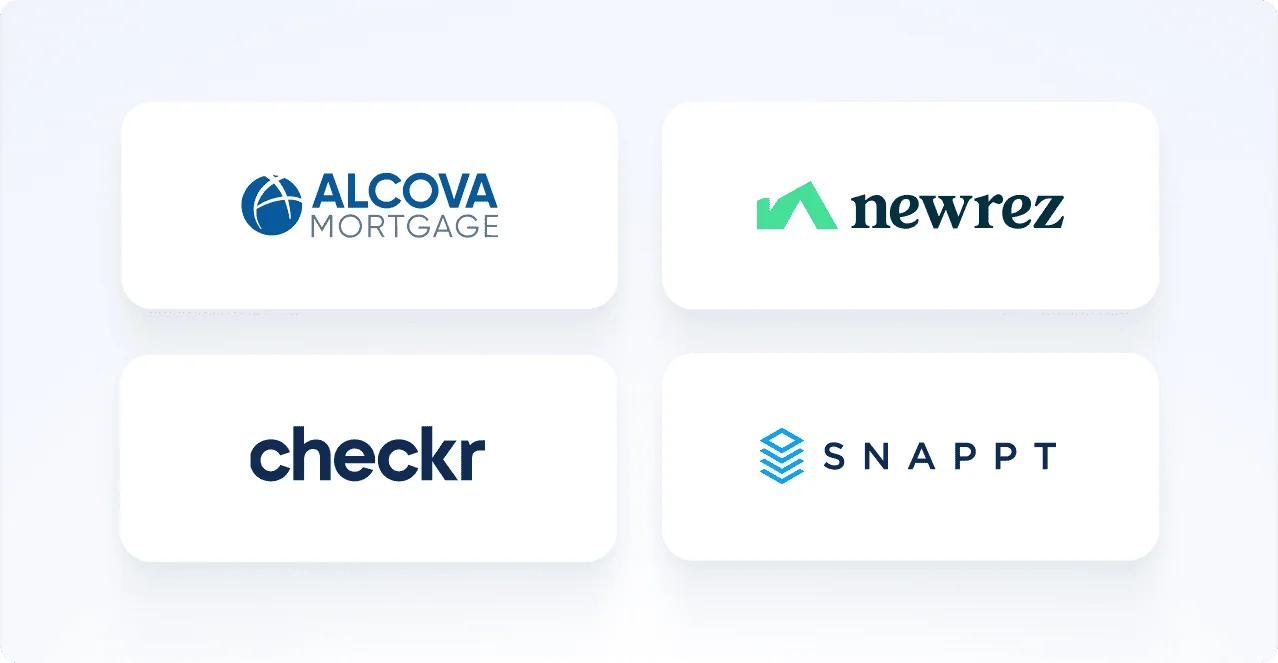Our panel of experts shared the tactics and technologies they’re leaning on to improve customer experience, and drive efficiencies and cost savings in a challenging market. Register to watch the webinar on-demand.
If you’re in the mortgage industry, it goes without saying that the recent housing market has been one wild ride. From the highs of the pandemic-fueled refi boom to the lows of this year’s mortgage rate rollercoaster, challenging might be an understatement.
But with challenge comes opportunity. For a recent Argyle webinar, we gathered a group of mortgage experts to share their insights and advice for making the most of the market and setting your organization up for success in 2023 and beyond. The panel, moderated by John Hardesty, general manager of Argyle’s mortgage division, included Terri Davis, co-founder of ALE Advisors; John Harpst, vice president of mortgage strategy at Lake Michigan Credit Union (LMCU); and Andy Woodman, senior vice president of mortgage lending and loan trading at Georgia United Credit Union.
Here are four key takeaways from their lively conversation:
1. Look to technology to drive efficiencies.
When refinance and purchase originations peaked during the pandemic, lenders piled on technology solutions to help them meet the demand. The problem was, they didn’t have the breathing room to really evaluate how effectively those additions served their bottom line.
Now, with origination volumes stalling, lenders have the time and bandwidth to revisit their tech stack to determine what’s actually delivering ROI, what’s weighing down their operations, and what gaps need to be filled.
For Georgia United, that meant launching automated verifications with Argyle.
“We couldn’t have adopted this two, three years ago,” said Woodman. “Now we have the bandwidth to do it, and it’s paying dividends. So, I think this has allowed us just to take a real step back and say, ‘Okay, let’s just evaluate everything from start to finish and where can we gain those valuable seconds and reduce cost and help our members at the same time.’”
The critical advantage lies not only in making the best of a slow situation, but in setting your organization up for maximum performance when the market inevitably rebounds.
This bears out in the research, with more than half of borrowers citing low lender fees as one of the three most important factors in the mortgage loan process.
It’s also a matter of keeping pace and staying competitive. Even if your firm doesn’t invest in new technologies, other firms certainly will. They will create efficiencies you can only dream of, and that will allow them to grab market share. To put it bluntly (like Harpst):
“If you’re not investing your time now in researching what’s available, you’re missing the boat.”
2. Reconsider—and reconfigure—your verification waterfall.
Many lenders default to The Work Number (TWN) for income and employment verifications because they see it as a low-friction option. When The Work Number doesn’t deliver results (and many times, it doesn’t), they resort to old-fashioned manual verifications, because they don’t want to incur another VOI and VOE expense. It’s a flawed approach because the “low-friction” path (i.e., TWN) also happens to be the most expensive and least effective.
The key to efficiency is upending that waterfall.
3. Embrace AI—with caution.
For all this talk about technology, it’s certainly not prudent to adopt software with wild abandon, and none of our panelists were willing to give AI-powered technologies an unrestricted green light.
Woodman, for one, doesn’t think the economies of scale are there, quite yet, to deploy AI at the decisioning level. “But I’m not naive enough to not have it on my radar and see where the other opportunities may lie using it,” he said. “I think it’s coming. We need to figure out…how to blend that into the way our operations teams work.”
Davis agreed, stressing that underwriting will always require a certain amount of human expertise. Where she sees the most immediate opportunity for AI is in the form of bots.
“I love the idea of using AI and bots to curate a process based on a profile of a borrower and your business,” she said.
Specifically, she suggests that bots may be deployed to coach mortgage bankers as they are on the phone with borrowers to provide the best possible experience in real-time. Or bots can be leveraged to coach your customer success team to provide the best possible support to brokers.
“There’s a lot of applications to curate processes based on content and data,” she said.
4. Find the balance between high-tech and human.
Our panel of experts further agreed that AI and other next-generation technologies won’t (and shouldn’t) supplant real people in mortgage operations.
Woodman credits Georgia United’s loan officers and their transparent, proactive communication style with driving customer adoption of the technologies the credit union has recently implemented.
“We’ve had success with [Argyle] because our loan officers have been able to properly explain to the borrower why this is important: ‘Why do we use this? It prevents you from having to provide us with all kinds of paperwork. It speeds up the loan process, so it reduces the number of days we get you to closing faster.’”
Hardesty pointed to research supporting the notion that many borrowers crave a blend of high-tech and high-touch loan processes. ICE Mortgage Technology recently reported that 26% of borrowers surveyed said they would like to use an equal blend of traditional methods and digital tools during their next mortgage experience, while both older (Gen X and up) and more experienced borrowers (5+ mortgages under their belt) demonstrate stronger preference for digital tools over in-person experiences.
Questions from the audience
The panel also fielded live questions from the webcast audience.
Q: What technology are you investing in to acquire new member originations?
A: Our credit union panelists focus on relationship-building, supported in some cases by technology, as their go-to method for drumming up new business.
Georgia United, for instance, utilizes tools to identify when properties that either are in their portfolio or owned by their membership go on the market, and then use that as an opportunity to reach out to the seller.
Meanwhile, LMCU relies on homebuyer education workshops to reach their member base as well as outreach to community leaders and nonprofit organizations. Their goal? To help reduce the home ownership gap in their footprint. Harpst reports that LMCU’s seminars often have long waitlists, suggesting that consumers are hungry for financial literacy training.
Q: Do the panelists and their respective firms use Argyle for HELOC loans?
A: Both Georgia United and LMCU do use Argyle for HELOC loans and follow the same process as they do for purchase loans.
“We lead with Argyle during the verification process,” Woodman said. “If it’s a hit, then that speeds up the timing as to how long it’s going to take for us to turn a HELOC around. In general, we close them between 12 and 14 days now. [Argyle] shortens it by at least a day or two.”
Q: What other tech, outside of verifications, are you evaluating to cut costs?
In her line of work, Davis finds that lenders are generally overwhelmed by the prospect of evaluating their tech stack and figuring out where to invest their money next. She offered two pieces of advice:
eNotes are now accepted in all 50 states, so If you’re not getting your borrower to eSign most documents, do so as soon as possible. You’ll save $250 a loan if you add eNote to your eClosing and $400 to $450 per loan if you fully digitize—on top of enabling faster, more expedient delivery to your investor.
Look into bots. They are not that expensive, and many IT teams can build their own bots with Microsoft. If you can automate certain tasks, even if it’s just progressing screens on Encompass, it’s worth it to reduce the number of touches on a loan.
The bottom line
Now’s the time to implement and optimize operational efficiencies that will position your organization to outperform and outprice the competition, both now when business is scarce and into the future when demand swings back up.
To learn more about our innovative approach to mortgage lending and our fast, frictionless Income & Employment Verification solution, check out our mortgage industry page—or register for an account to explore Argyle first-hand.









